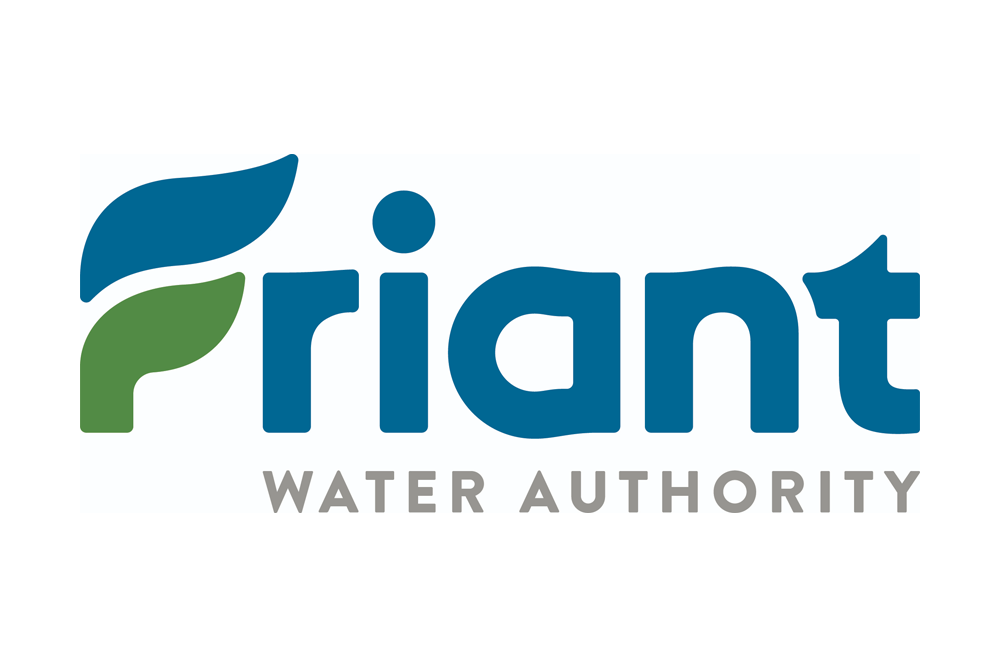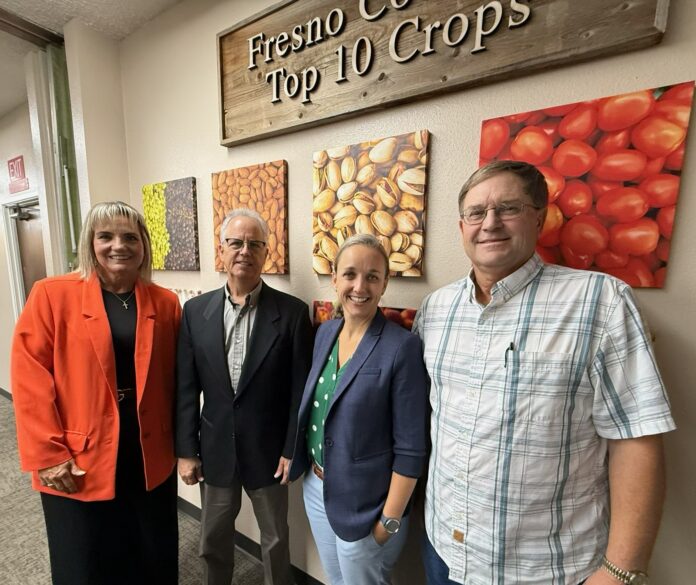In agriculture and water management you don’t get to play loose with the rules, like some woke social, enviro, special justice studies textbook author. Bulls don’t want to become cows, crops don’t care who did or didn’t live on the land before them and water runs downhill for as long as the earth has gravity. Water will continue to do so for as long as there is a planet earth with water. I don’t know for sure, I’d have to brush up on my astrophysics, but if the earth ever stopped spinning water might just pool up or fly off into space. But we’d have much bigger problems than hydro flow dynamics at that point.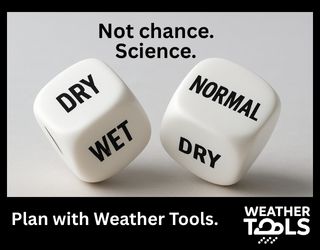
Speaking of bigger problems. The way the government’s regulatory and financial schemes have impacted the San Joaquin Valley has been, maybe not as big as the earth drifting away from the sun. But if the final goal is to shut down farming it’ll have the same effect.
The Meeting
Chairman Eddie Ocampo wasn’t able to attend in person and his internet connection wouldn’t stay put so, Vice Chairman Geoff Vanden Heuvel started the meeting at 9:00am. He gave the 40 or so assembled in the room a run down of what the Blueprint is and who are the people that make up this effort. It is comprised of the willing and working to bring about better water supplies for the Valley. Not just farms but families, businesses and communities since we all rely on water.
Unified Water Plan
Bill Swanson, Stantec Engineering, explained under the San Joaquin River Restoration legislation (PL 111-11) included funding for the California Water Institute to prepare a plan to pull together the plans to provide water for the San Joaquin Valley. This is the Unified Water Plan. Since then the Sustainable Groundwater Management Act was passed in 2014. As Swanson said it has been a challenge.
Swanson pointed out in retrospect the Fresno Farm Bureau was formed in 1917, well before SGMA and the Central Valley Project and the grossly misnamed Central Valley Project Improvement Act. We are entering a new, transformative era for water in the San Joaquin Valley and we’d best have a plan to meet it. The Unified Water Plan includes supplies, flood control, infrastructure, recharge and of course funding.
Swanson said our current infrastructure is designed to take snowmelt from the Sierra Nevada into reservoirs for storage. He pointed to atmospheric rivers as an example of climate change. This is expected to result in the same amount of precipitation but with more rain and less snow. The demand for water while simultaneously the reduction of surface water supplies has put more stress on the Valley’s aquifer. We’re pumping more out of the ground than we’re putting back.
There is a 2.5-3 million acre-feet water deficit in the Valley thanks to the government’s lack of investments in water infrastructure since the mid-1970s and the state’s willingness to bow to NGO pressures. (I don’t think I’m wrong about this, but if you do, let me know.)
Flood control hasn’t kept up with the needs. The state has allowed levies to deteriorate. Forrest management has allowed a major unbalance of nature resulting in a loss of natural headwater benefits. Subsidence, silting up of channels and antiquated reservoir operations are adding up to worse flood control and water supplies than we’ve seen in the past 50-years.
Swanson said it will require a combination of solutions to come out of the three million acre/feet deficit. He said reestablishing nature conditions for the ecosystem holds promise.
More Plan
Swanson listed more than seven sources used to identify water supply projects that could be included in the UWP. Groundwater Sustainability Plans throughout the Valley overwhelmingly include recharge as an important part of achieving groundwater balance.
The UWP has taken and sorted out the GSPs and found there are 1.4 million a/f of opportunity to put water back in the ground if the supplies can be secured. There is another 1.6 million that could be realized through non-recharge projects. Meeting the Valley’s water shortfall will cost billions of dollars. But, as Swanson said this is an investment for the next 100-years.
Swanson rhetorically asked what is the Valley doing to help itself. He said it is foundational for the Valley to do everything it can to solve the problem with as many tools and actions at its disposal. But without a functional infrastructure to move this water it’s a moot point. All the major canals; the Friant Kern, the Delta Mendota, the California Aqueduct are experiencing subsidence. That is a priority for the UWP. There are of course many other things needed to achieve the goals the Valley has for its water situation.
Thankfully there is an alignment between the research being currently conducted by the Department of Water Resources and the goals of the Blueprint. A recently passed bill by State Senator Anna Caballero instructs DWR to develop another nine-million a/f for the entire state.
Grower Charles Meyers asked if the UWP team has looked at a 1957 water plan. Swanson was aware of this plan. Vanden Heuvel pointed out the usual method in California is the user pays.
Laura Ramos, Director of the California Water Institute spoke saying a draft of the UWP chapters are available for review and comment by contacting CWI at www.CaliforniaWater.org
Adam Nickels & the USBR
Vanden Heuvel introduced Adam Nickels, the Acting Regional Director for the US Bureau of Reclamation. Nickels was going to be in person but the US Senate’s federal government shutdown has prevented him from traveling to Fresno from Sacramento.
Nickels said he’s very much looking forward to seeing the UWP. He said it dove tails nicely with DWR’s studies. He said before he talks about President Donald Trump’s Executive Orders he wanted to talk about the federal Central Valley Project.
He said our ancestors had a view to move water from northern California to the rest of the state as early as the 1880s and 1890s. By the mid-1920s California’s state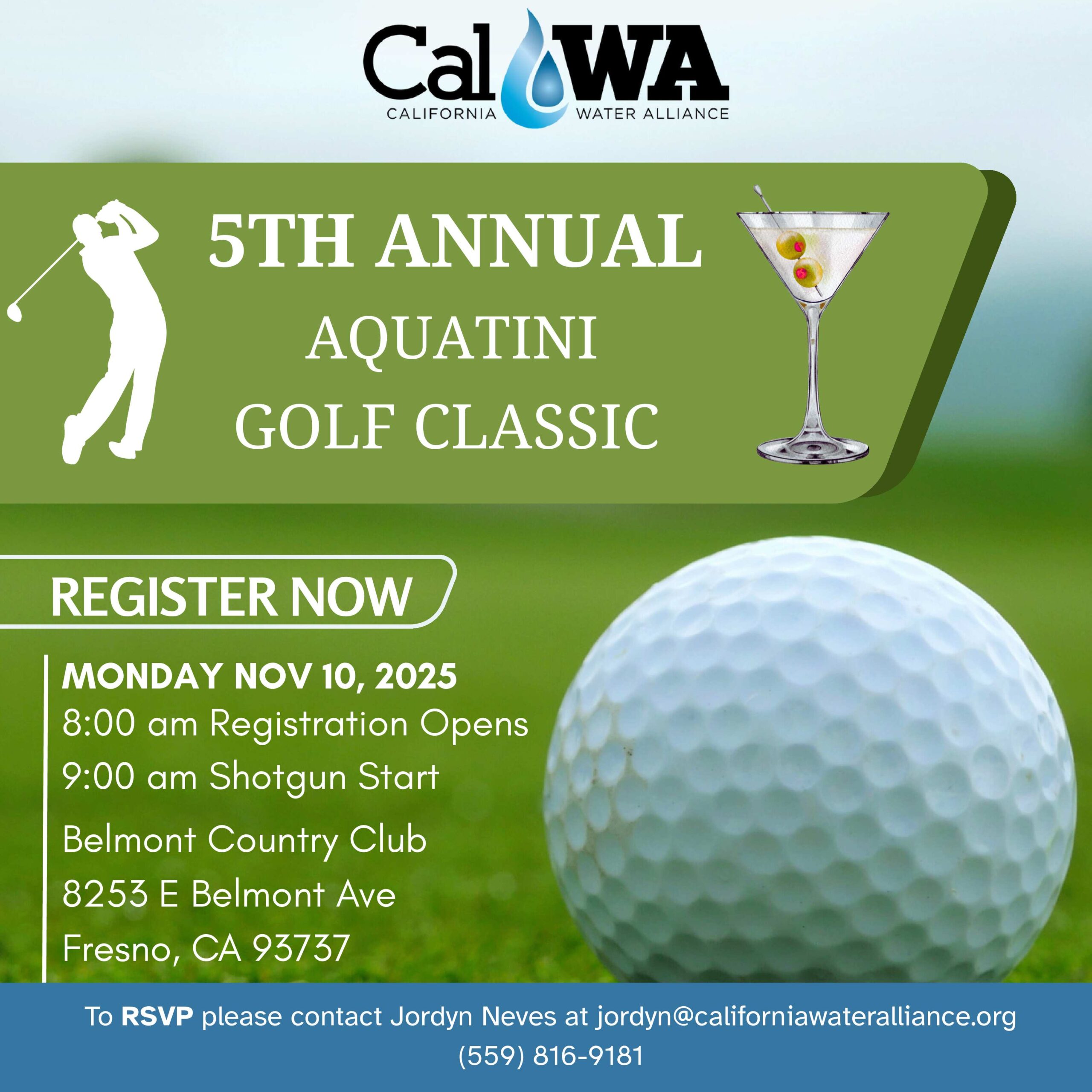 government started issuing water bonds but the Great Depression hit and it couldn’t raise enough money. The feds then stepped in and took over the CVP. If the CVP were to be built by today’s regulatory environment and current costs it would be more than $40 billion easily. Yet the value of the current CVP has returned multiple times that amount. Nickels said we need to think about investing billions more in water infrastructure.
government started issuing water bonds but the Great Depression hit and it couldn’t raise enough money. The feds then stepped in and took over the CVP. If the CVP were to be built by today’s regulatory environment and current costs it would be more than $40 billion easily. Yet the value of the current CVP has returned multiple times that amount. Nickels said we need to think about investing billions more in water infrastructure.
Nickels came to the USBR as an archeologist. He said all great civilizations have had water investments. We need to continue investing in water in the San Joaquin Valley to keep America a great nation. We have, after all, a rare jewel of a Mediterranean climate, fertile soils and if managed properly abundant water.
E.O.
In January 2025 Trump signed Executive Order 14181 and it calls for the federal agencies to work to ease the water burden on California. Nickels said this has resulted in an all hands-on deck regulatory agency response. The Bureau has its hands on some very complex ways, as Vanden Heuvel said, to turn the valves.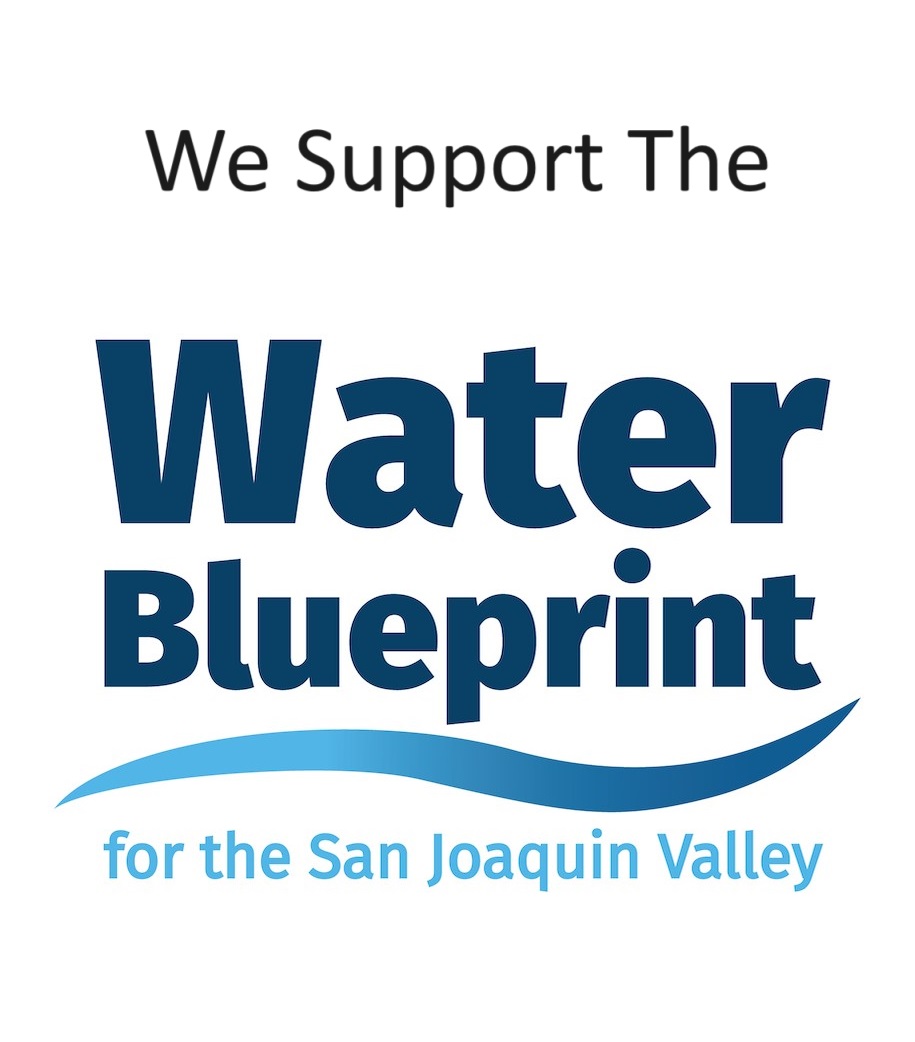
Meyers asked Nickels how much Trump understands the water situation in the San Joaquin Valley. Nickels obviously can’t read the President’s mind but he said the White House and the Secretary of Interior are very aware of the problems with water management in California.
Another question was how much does the USBR have to share authority with the state. Nickels said the CVP has to operate under state water rights by law. As the conditions of the water rights change, such as actions by the State Water Resources Control Board, the Bureau has to comply.
Nickels said there is still infrastructure funding available. He listed repairs on the canals up to $750 million out there right now. There’s another $1 billion in the big beautiful bill. This is non-reimbursable money, meaning this money doesn’t have to be paid back to the feds. The hitch is it out there for the entire Bureau projects in all the western states. So a little competition there.
Besides the canal repairs there is also the raising of the BF Sisk Dam on the San Luis Reservoir and the Sites Reservoir that the Bureau is investing in.
Nickels reported the Family Farm Alliance sent the USBR a letter asking the NEPA process be reviewed. The NEPA process adds millions to most projects because it can be drawn out and delay projects. The Bureau is coordinating with stakeholders all over the west, so we might be looking at a rational improvement. More will be announced the FFA conference in Reno.
Nickels received a round of applause at the end of his presentation. That’s a first as I recall for a Bureau report. Good for him.
Committee Reports
The Chair of the Technical Committee is Dr. Scott Hamilton. This is a very important committee, doing amazing work and for some reason he didn’t give a report although he was introduced.
Next, Mike Wade heads the California Farm Water Coalition and also heads the Communications Work Group committee and gave a report. He said the Com Group sends out press releases, blogs and social media content. He said to go to www.waterblueprintca.com to see this product. There are also e-blasts – short, hard-hitting messages sent by email. He’s happy with the click through rates, they’re really good. The Blueprint is also working on a speakers’ bureau. Civic and Farm Bureaus (and I think just about anyone) are welcome to reach out and the Blueprint will swoop in and talk.
Paul Boyer spoke saying he fully encourages implementing the speakers bureau and sees great opportunities from this. Another question was, how much does the policy makers respond to the data collected by the Blueprint. Wade said it is difficult but not impossible. The good news is the emails can be tracked. There is also a Blueprint Education Group that interacts with policy makers.
Legislation
Westcoast Advisors’ Michael Boccadoro and Beth Olhasso are the Sacramento outreach hired by the Blueprint. Vanden Heuvel said the Southern California Water Coalition awarded Olhasso the Water Communicator of the year. She also received applause.
Olhasso reported on federal issues saying she only works on state matters but since J. Scott Petersen wasn’t available today she thanked Nickels for his earlier help. She said with the federal government shut down there are delays all over the place. The Farm Bill, Army Corps of Engineers and streamlining of red tape are wrapped up in the budget issues.
On the state side of government matters Olhasso reported California has a massive budget deficit that will spill into next year. The Prop 4 resources bond is starting to pay out. About $1 billion of the $4 billion set aside for water has escaped the wallet moths.
She reported streamlining the Delta Conveyance Project didn’t move across the finish line. The Blueprint was successful in securing funding for the Airborne Snow Observatory. The ASO is scalable and may be eligible for greenhouse gas reduction funding.
There were 2,400 bills introduced last year and relatively few were vetoed. That’s more than a trash can full of crazy. Olhasso said DWR has lost a good deal of staff due to budget cuts but there are still a few around to work with on SB 72, which I guess is good.
The box of rocks brigade claiming to be enviro-mentalist in Sacramento has soaked their panties in gasoline while running in circles with matches trying to block any federal policy changes – even if they are commonsense. Maybe even especially if they are commonsense. If I heard correctly some of this year’s crazy has been temporarily tamped down for the time being.
Looking to 2026 Olhasso said there is no telling what will be thrown out in the coming year. There will be a budget announcement from the governor and then a bazillion monkey wrenches start tinkering with it. That’ll be fun to watch.
The State Board has slowed down its Bay/Delta efforts and is now moving towards HRL, the Healthy Rivers & Landscapes. If I understood correctly the 40 percent unimpaired flows isn’t completely removed from the table. However, there is a glimmer of hope that sword hanging by a thread doesn’t weigh as much – meaning the thread won’t break and sword kill us all.
Finances
Kassy Chauhan gave the financial report. She said the Blueprint is happy to come to your organization and help you talk your board into contributing. She also urged the entities giving now, continue to do so. The outreach and lobbying aren’t free. By then it was 11:01am and Vanden Heuvel called the meeting to adjourn.
DISCLAIMER OF RESPONSIBILITY; Waterwrights.net strives to provide its clients with the most complete, up-to-date, and accurate information available. Nevertheless, Waterwrights.net does not serve as a guarantor of the accuracy or completeness of the information provided, and specifically disclaims any and all responsibility for information that is not accurate, up-to-date, or complete. Waterwrights.net’s clients therefore rely on the accuracy, completeness and timeliness of information from Waterwrights.net entirely at their own risk. The opinions expressed in this report are those of the author and do not represent any advertisers or third parties.
ALL RIGHTS RESERVED. Copyright 2025 by WaterWrights.net




